‘Mountains are calling, I must go’ – so you pack your bags and jet off. But an hour into the trek or hike, you get ‘Nature’s Call’ and as much as you want to hold it in, you can’t, neither can you reject it. So how do you answer nature’s call outdoors and relieve yourself? As a woman, we often find it hard to figure out how to pee outdoors.
A thousand questions of how, where, hygiene and safety, barge in when you’re already on the verge of losing control. So, here is a practical woman’s guide to peeing outdoors. This will help you with everything you need to know about managing peeing outdoors as a woman.
We’ve all been there—squatting awkwardly behind a bush, hoping no one walks by, thinking science experiments were easier. While it might not be the most glamorous part of the journey, it doesn’t have to be traumatic or unsanitary. With a little preparation and practical tips, you will save yourself from trouble.
Table of Contents
1. Preparation before your Trek/Trip
- Pack your hygiene kit: A hand sanitiser, wet wipes/toilet paper (biodegradable), ziplock bags, Kula cloth, handkerchief, extra pairs of underwear, small trowel, female urination devices (stand and pee devices)
- Practice, Practice: This might sound silly, but squatting outdoors is a skill. Practice at home – yes, absolutely! Get familiar with your balance and posture so you’re not figuring it out mid-pee on a rocky slope.
2. Choose your Spot
- Distance Matters: Always pee at least 200 feet away from water sources, trails, and campsites to protect the environment.
- Look for Cover: Find bushes, rocks, or trees for privacy. But make sure to not wander off too far.
- Check the Ground: Avoid peeing on rocks, leaves, or slopes where splashback is likely. Bare soil absorbs best. Dig a hole into the sand, finish your business and close the hole back in. Use a small trowel, or a rock, stick or the heel of your shoes to dig the hole.
- Face Downhill & Mind the Wind: Pee facing downhill so urine flows away from your feet, and keep your back to the wind to avoid any unpleasant surprises.
3. The Squat Technique

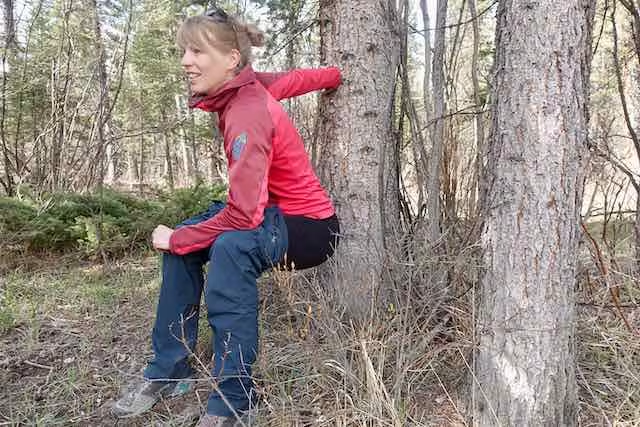
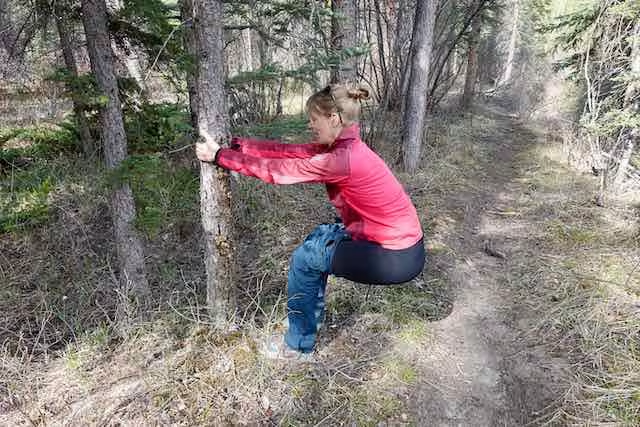
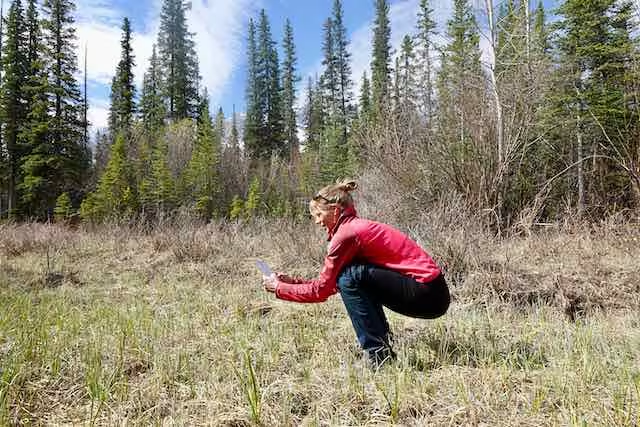
- Here’s an easy rule: low and stable wins the race.
- Stand with your feet shoulder-width apart.
- Lower yourself into a squat – go low but keep your center of gravity stable.
- Lean slightly forward so pee flows behind you (not on your shoes!).
- If you’re in a forest or hilly terrain, find a tree to hold on to. It can help balance and even offer extra privacy.
4. Female Urination Device (FUD)
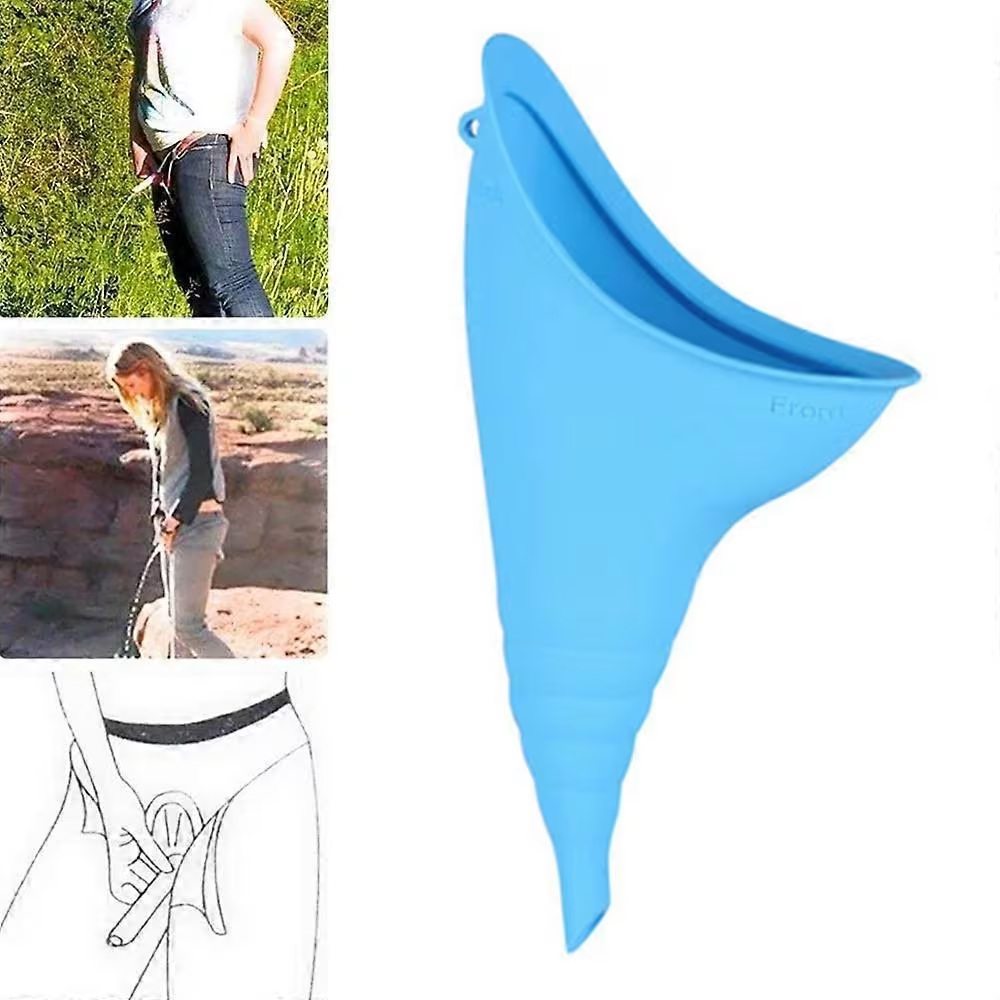
Stand and Pee devices are becoming popular of late. This could be a backup option for you, if you prefer not to squat. But these require a bit of practice before you can be comfortable using them outdoors. Get a hold of it while at home, with clothes on to ensure you don’t dirty your clothes.
These devices are best for crowded or exposed trails, or during cold weather when removing layers is a nightmare, and for gross roadside public toilets.
Some women have reported it not being effective for them, while some have sung praises. Which side you are on depends on your preference and management.
5. Cleanliness & Hygiene
Cleaning yourself after the business is done is important, so you don’t catch infections.
a. Toilet Paper/Tissues or Cloth: Bring a small roll in a ziplock or a compact tissue pack. Please don’t leave any waste behind. Carry another ziplock for used paper or consider biodegradable tissues.
b. Pee Rags/Kula Cloth: Yes, it’s a thing! A pee rag is a designated cloth for drying after peeing. Many women have sought out to use a Kula Cloth which is smooth, safe and environment friendly. It is reusable, washable, and eco-friendly, just clip it to your backpack to dry after use. Wash it at the end of the day with soap and water.
c. Natural Alternatives: There could be times when you are paperless and rag-less. Do it the natural way – smooth stones, moss, or big soft leaves work too. Just be sure you know the plant. You don’t want a poison ivy situation.
6. Managing during your periods
This combination is deadly and scary. Managing hygiene while on your periods outdoors is challenging, but not impossible. Read this practical guide on trekking during your periods and this guide on maintaining hygiene on periods while trekking.
7. Other Safety Tips
- Always wipe front to back to avoid infections
- Change your underwear everyday at night once you reach your camp. Quick-dry underwear is your best bet, along with moisture wicking clothes to help to stay away from infections
- Always sanitise your hands post-pee. Hygiene is health!
Lastly, let go of the shame. It is a natural process, answer the call. Don’t hold on to the pee for hours – it will damage your systems.
Know of any more tips that can help others? Drop them in the comments.
Honestly, it’s awkward the first few times. But over time, you get faster, smarter, and way more confident. Peeing outdoors isn’t weird or gross, it’s natural. Just go with the flow!
Read more on Menstrual Cups, Tampons, Pads or Period Panties: What Works Best on a Trek?

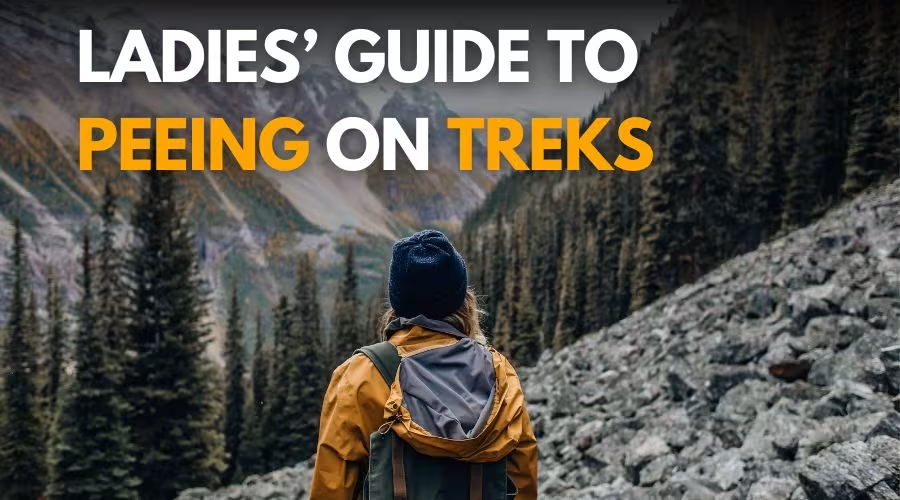
Leave a Comment